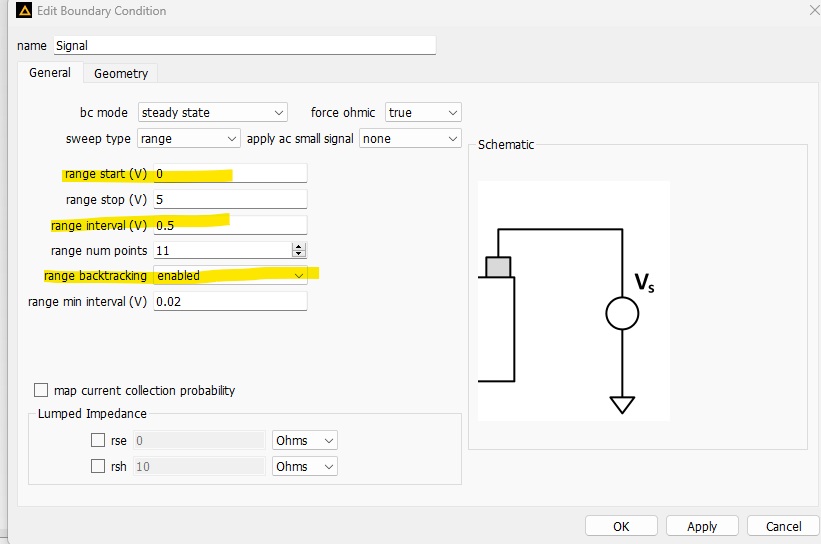- Help Center
- Ansys Lumerical
-
Getting Started With Ansys
-
Ansys Installation
-
Licensing
-
Ansys Mechanical
-
ANSYS AEDT
-
Ansys Maxwell
-
Ansys HFSS
-
Ansys CFD
-
CAD
-
Meshing
-
LS-Dyna & LS-Prepost
-
SpaceClaim
-
Ensight
-
Ansys Lumerical
-
Zemax
-
Discovery
-
AUTODYN
-
Workbench
-
Ansys EMC Plus
-
SIwave
-
CFD-Post
-
Ansys Sherlock
-
Q3D
-
Ansys 3D Layout
-
Fluent Meshing
-
Thermal Desktop
-
Icepak
-
Ansys Icepak
-
Twin Builder
-
Fluent
-
AEDT Circuit
-
EMA3D
-
Linux
-
Optislang
-
Motor-CAD
How Do You Select the Optimal Voltage Step in Lumerical Charge Simulations for Convergence?
Ensuring simulation convergence in numerical charge simulations requires careful consideration of the voltage step applied to the contacts, which serve as electrical boundary conditions. The iterative nature of CHARGE simulations, where each bias voltage solution builds upon the previous, means that an excessively large voltage step could hinder convergence and lead to errors. To mitigate this issue and enhance convergence, consider the following guidelines:- Start from Equilibrium: Even for single-voltage simulations, begin by sweeping the boundary condition from zero (equilibrium) to the target voltage. This incremental approach generally improves the likelihood of convergence compared to initiating the simulation at a nonzero voltage.
- Moderate Voltage Steps: Avoid large voltage steps. Instead, use smaller increments to allow the simulation to adapt to the voltage changes gradually, reducing the risk of convergence errors.
- Utilize Backtracking and Auto Features: Leverage the "range backtracking" feature when using the "range" sweep type, or consider the "auto" sweep type for electrical boundary conditions. These features are designed to automatically decrease the voltage step in case of convergence failure, retry the solution, and continue this process until the minimum user-defined step size is reached.

-2.png?height=120&name=Ozen%20Long%20-%20Back%20(1)-2.png)